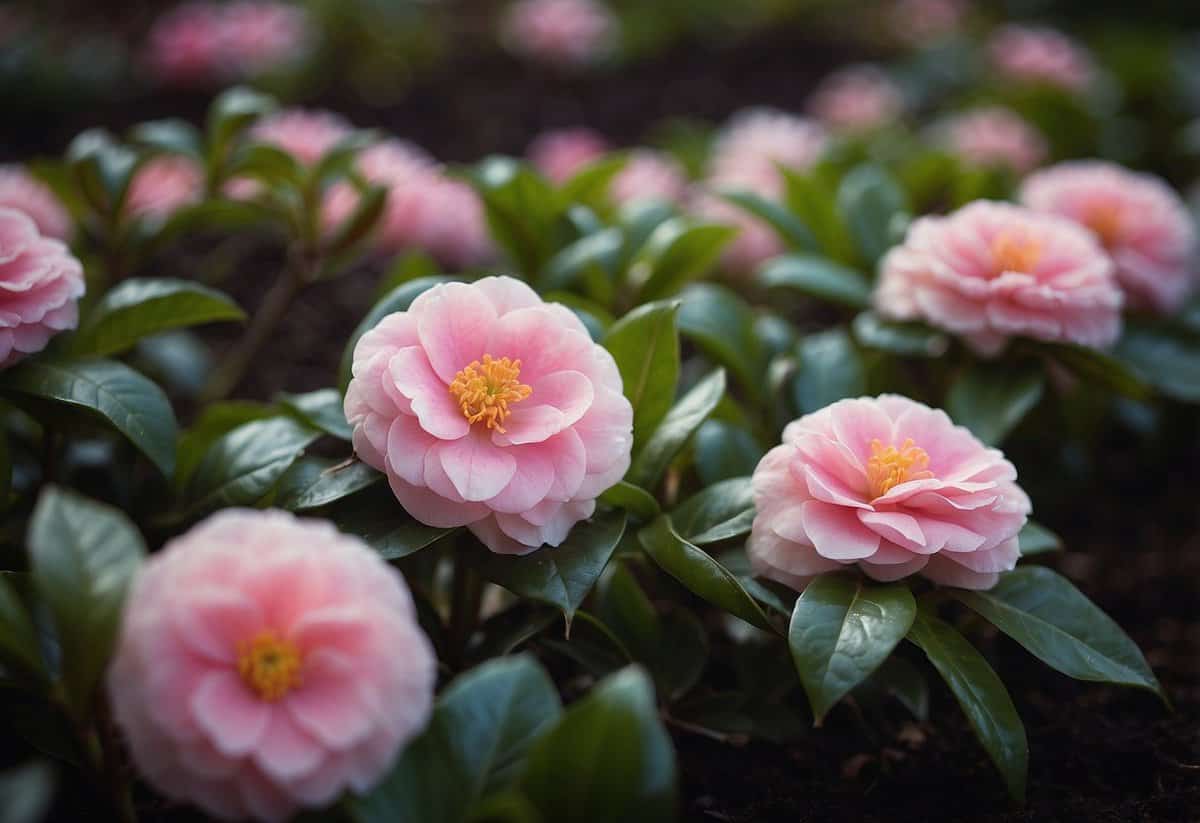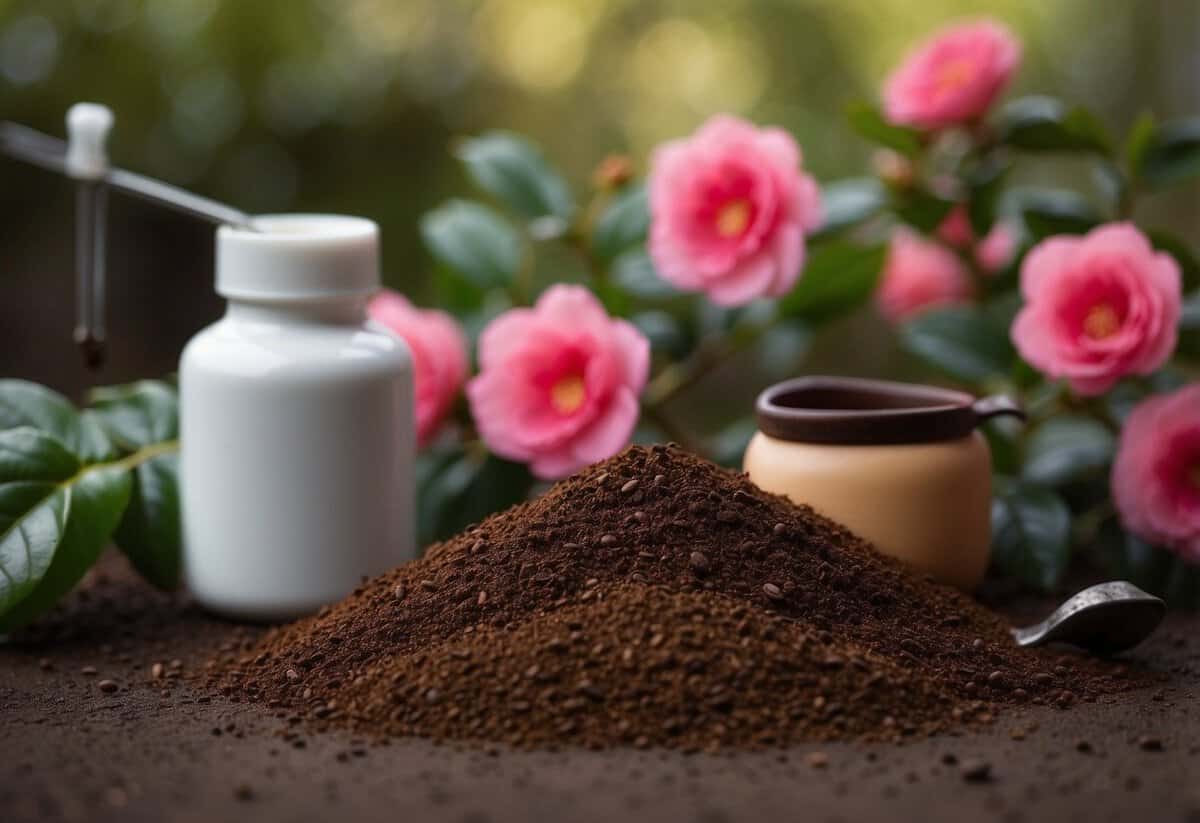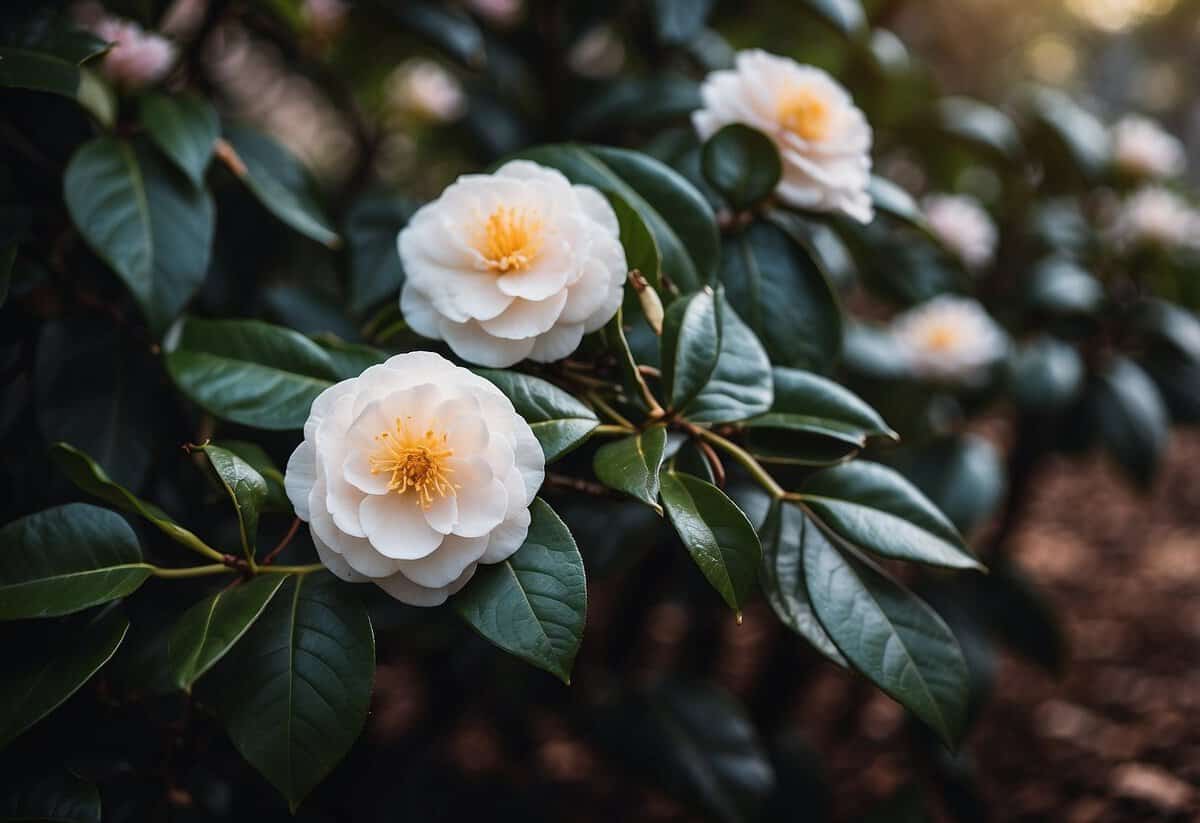Do Camellias Like Coffee Grounds? Tips for Healthy Growth
If you’ve ever wondered whether coffee grounds can benefit your camellias, you’re not alone. Yes, camellias do like coffee grounds because they help balance the soil’s pH and provide essential nutrients like nitrogen and potassium. These nutrients are crucial for maintaining the vibrant blooms and healthy foliage that make camellias so beloved.

Using coffee grounds in your garden is simple. You can sprinkle them directly at the base of your camellia plants, ensuring even coverage around the roots. This natural method not only enhances soil acidity but also offers a slow-release fertilizer effect, promoting steady growth and lush blooms.
By incorporating coffee grounds into your gardening routine, you can give your camellias a natural boost. Learn more about the benefits and best practices of using coffee grounds for camellias at Gardening 101 and Gardening Channel.
The Benefits of Coffee Grounds for Camellias

Coffee grounds can offer several advantages for camellias, such as maintaining soil acidity and providing essential nutrients like nitrogen. These benefits may encourage healthier growth and more vibrant blooms in acid-loving plants like camellias.
Acidic Soil Preferences
Camellias thrive in slightly acidic soil, making coffee grounds a suitable soil amendment. Coffee grounds have an acidic pH that can help maintain the desired soil acidity levels. When you add coffee grounds to your camellia’s soil, the pH balance becomes more favorable for nutrient absorption.
This acidic environment also supports the growth of beneficial microorganisms, which play a vital role in breaking down organic matter. The decomposed matter releases essential nutrients, further benefiting your camellia. Consistently applying coffee grounds can help sustain these optimal conditions, promoting robust and healthy growth.
Nutrient Content and Fertilization
Coffee grounds are rich in nutrients such as nitrogen, potassium, and, to a lesser extent, phosphorus. Nitrogen is crucial for the growth of lush, green foliage, while potassium supports overall plant health and resilience. Although coffee grounds contain less phosphorus, this essential nutrient aids in root development and flowering.
When you use coffee grounds as a soil amendment, you’re essentially providing a natural, organic fertilizer. This means you can help your camellias grow without relying on harsh chemicals. Additionally, coffee grounds improve soil texture and water retention, ensuring that your camellias have consistent access to moisture and nutrients. Regularly incorporating coffee grounds into your soil can create a more fertile and hospitable growing environment for your camellias.
Incorporating Coffee Grounds into Garden Practices

Using coffee grounds in your garden can greatly enhance soil quality and boost plant health, especially for camellias. It involves composting or direct application, each offering specific benefits.
Composting with Coffee Grounds
When you add coffee grounds to a compost pile, it enriches the compost with nitrogen, potassium, and phosphorus. These nutrients help the soil structure and overall plant growth.
To get the best results, mix coffee grounds with carbon-rich materials like leaves or straw. This helps balance the compost, preventing issues like too much moisture or unpleasant odors.
Composting coffee grounds also helps retain soil moisture, a crucial factor for camellias. Coffee grounds break down slowly, providing nutrients over time and improving water retention.
Direct Application and Mulching
You can directly apply coffee grounds to your garden as a mulch. Spread a thin layer around your camellias to help with soil acidity, which camellias prefer. Coffee grounds can help control weed growth and maintain more stable soil temperatures.
Make sure you use only a small amount and mix it with other organic matter like leaves or grass clippings. This prevents soil compaction and promotes healthy root growth.
Directly applying coffee grounds also provides immediate nutritional benefits to your camellias, encouraging vigorous blossoms and lush foliage. It’s a simple yet effective way to improve the health of your plants.
Understanding the Impact of Coffee Grounds on Soil pH

Coffee grounds can play a significant role in altering the soil pH, which affects your camellias’ growth. It helps to understand both how they manage soil acidity and their impact on plant health.
Managing Soil Acidity
Coffee grounds are slightly acidic, with a pH ranging from 4.5 to 6.0. When added to soil, they can help reduce the pH, especially useful if your soil is too alkaline. This can create a more favorable environment for camellias, which prefer slightly acidic conditions.
It’s important to note that used coffee grounds are less acidic than fresh ones. Most of the acidity is water-soluble and is removed during the brewing process. So, while used coffee grounds still help manage soil acidity, their impact is milder. Avoid adding too much at once; a thin layer will suffice.
pH Balance and Plant Health
Soil pH is crucial for nutrient availability and microbial activity. Camellias thrive in slightly acidic soil with a pH around 6.0-6.5. Coffee grounds can help achieve this balance, supporting better nutrient uptake and healthier growth.
When the pH is too high (alkaline), camellias struggle to absorb essential nutrients like iron and magnesium, leading to issues like chlorosis, where leaves turn yellow. Using coffee grounds can correct pH levels, preventing such deficiencies.
Regularly test your soil pH to ensure it’s within the ideal range for camellias. Adjust the amount of coffee grounds used based on the results. This careful management helps maintain a balanced environment, promoting lush, healthy camellias.
Pest Control and Other Protective Benefits

Using coffee grounds in your garden offers multiple advantages, such as acting as a natural pest repellent and enhancing the healthy growth and resistance of your camellias.
Natural Repellent Characteristics
Coffee grounds can deter a variety of pests. By spreading them around the base of your camellias, you can keep slugs, snails, ants, and even some larger animals like rabbits and deer at bay. The caffeine in coffee is toxic to these creatures, and the strong smell masks the scent of plants, making it harder for pests to locate your camellias.
You can also use coffee grounds to deter mosquitoes and yellow jackets. Burning coffee grounds in a bowl works like incense, keeping these insects away from your garden. This is especially useful during outdoor activities, ensuring a pest-free environment around your plants.
Healthy Growth and Resistance
Adding coffee grounds to the soil can boost your camellias’ health. The grounds contribute to soil acidity, a condition that camellias thrive in. This helps the plants absorb key nutrients more efficiently. Coffee grounds are rich in nitrogen, which promotes leafy growth, and potassium, which supports overall plant health and resilience.
Healthy plants are more resistant to diseases and pests. By improving the soil’s nutrient content, coffee grounds help your camellias grow stronger. This enhanced resilience reduces the likelihood of pest infestations and diseases, allowing your camellias to flourish with vibrant blooms.
Garden Compatibility with Coffee Grounds

Adding coffee grounds to your garden can benefit various plants. It’s important to know which plants thrive with coffee grounds and to be aware of the potential negative effects and precautions.
Suitable Plants for Coffee Grounds Usage
Some plants thrive in acidic soil and can benefit from the nutrients in coffee grounds. Acid-loving plants like azaleas, rhododendrons, and hydrangeas appreciate the added acidity and nutrients. These plants can show healthier growth and more vibrant blooms.
Blueberries also enjoy the extra acidity coffee grounds provide. They help in producing better fruit. Tomatoes benefit from the nitrogen in coffee grounds, which promotes strong stem and foliage growth.
Vegetables like carrots, potatoes, and radishes enjoy the rich soil created by adding coffee grounds. Even certain houseplants can benefit, but it’s crucial to check their soil pH preferences first.
Potential Negative Effects and Precautions
Although coffee grounds have many benefits, there are some precautions you should take. Fresh coffee grounds are acidic, which might not be suitable for plants that prefer a neutral or alkaline soil.
Used coffee grounds are less acidic but still contain some nutrients. You should avoid applying them around plants that don’t like high acidity such as roses. Too many coffee grounds can create a dense layer on the soil, potentially causing water retention issues or mold growth.
Be mindful of pests like snails. Coffee grounds can deter these pests, but not all insects react the same way. Always balance coffee grounds with other compost materials to ensure a healthy garden environment. Use them moderately to avoid any potential soil imbalance.







